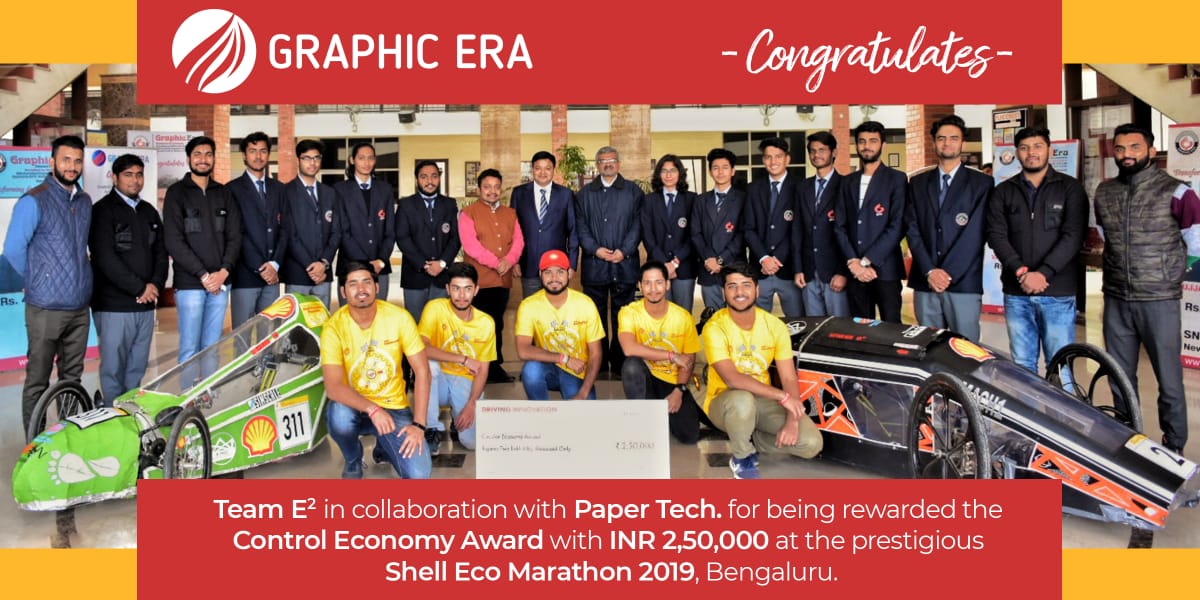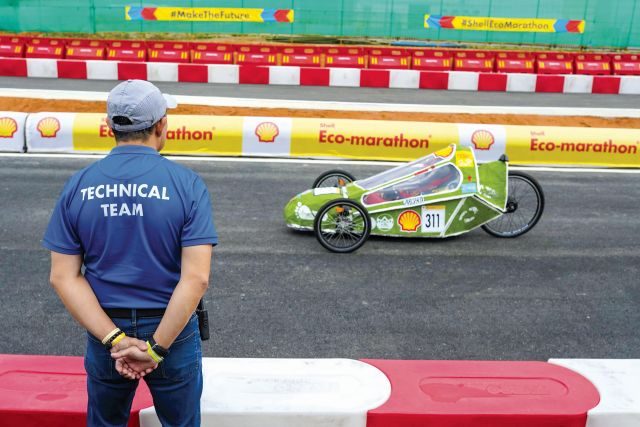An Electric Car Made of Recycled Paper? Students Build a Prototype That Works
“Everyone who heard about our innovation doubted us. It didn’t help with the confidence. But we knew we were doing the right thing”

This article has been sponsored by Shell
“It was a defining moment for us, especially because it was our first attempt for our team and second for our college at this prestigious competition. And, now we are planning to outdo ourselves by achieving a mileage jump to 600 km per kilowatt. From here, we can only get better!” says Madhur Saxena, a 21-year-old engineering student of Graphic Era (Deemed to be University) in Uttarakhand.
Madhur is one of the 10 members of teamE^2, who dared to challenge convention and came up with an out-of-the-box idea of building a prototype electric car, out of paper!

Using principles of paper engineering, the students from the E^2 team in collaboration with another college club, Papertech, created the car’s outer body with recycled papier-mâché mixed with Plaster of Paris (PoP).
“Having had experience working with paper, Papertech collaborated with E^2 to create the vehicle, by reinforcing the raw material of paper into papier-mâché. We built a wireframe mould to create the outer paper body of the car,” says Yatharth Joshi, a member of Papertech.
Elaborating on the same, Madhur says, “We collected paper waste from the campus and the neighbouring areas and shredded it all to make papier-mâché that was shaped into the body of the car. We also added PoP to ensure strength.”
Owing to their choice of materials, the vehicle is not just recyclable but also waterproof and fireproof. Plus, when compared with other electric single-seater racing cars that usually have the body made of carbon fibre, this one stands out for being lightweight and cost-effective.

While the expenditure of making a car with a carbon-fibre body would have approximately cost close to Rs 3 lakh, this 40-kg car cost just Rs 1.78 lakh.
And all of this was completed in a matter of months before the 2019 Shell Eco-marathon India, in Bengaluru.
Talking about the process and challenges, Madhur says, “With the available time and limited knowledge about electric vehicles, we faced several operational challenges and failed a number of times. We even burnt some 3-4 motors before finally getting it right. But, obstacles followed even in Bengaluru. The car’s fuse went off just a day before the final marathon and we had to frantically travel across an unknown city to find another and fix the car.”

With each hurdle, Madhur says, a layer of fear and nervousness chipped away and the team came out stronger than ever. “I remember, the driver Abhinav Devrani was extremely tensed a few days before the race. Everyone who heard about our innovation of creating the car’s body with paper would bear a strange expression of doubt and concern. It didn’t help with confidence. But we knew we were doing the right thing. On the final day, despite so many hiccups, Abhinav and the team eventually were able to overcome the fear with a sense of excitement and joy,” he adds.
So after pushing all the odds out of our way, C-Zero finally raced through the tracks and achieved a mileage of 108 km/kWh. They also won the Circular Economy award in the Off-Track category.
A worldwide energy efficiency competition, Shell Eco-marathon witnesses a deluge of engineering and science students participating every year. They build innovative automotive vehicles that are fuel-efficient and can potentially revolutionise the future of the automobile sector. It is a confluence of today’s leaders and future innovators who are passionate about giving back through sustainable solutions for energy-related challenges. Through these efforts, the competition is not just showcasing innovative talent for the automobile industry but is also contributing to the circular economy. Each prototype is built keeping this principle in mind, be it in terms of the design or the materials used.
(Edited by Gayatri Mishra)
Like this story? Or have something to share?
Write to us: [email protected]
Connect with us on Facebook and Twitter
If you found our stories insightful, informative, or even just enjoyable, we invite you to consider making a voluntary payment to support the work we do at The Better India. Your contribution helps us continue producing quality content that educates, inspires, and drives positive change.
Choose one of the payment options below for your contribution-
By paying for the stories you value, you directly contribute to sustaining our efforts focused on making a difference in the world. Together, let's ensure that impactful stories continue to be told and shared, enriching lives and communities alike.
Thank you for your support. Here are some frequently asked questions you might find helpful to know why you are contributing?


This story made me
-
97
-
121
-
89
-
167














